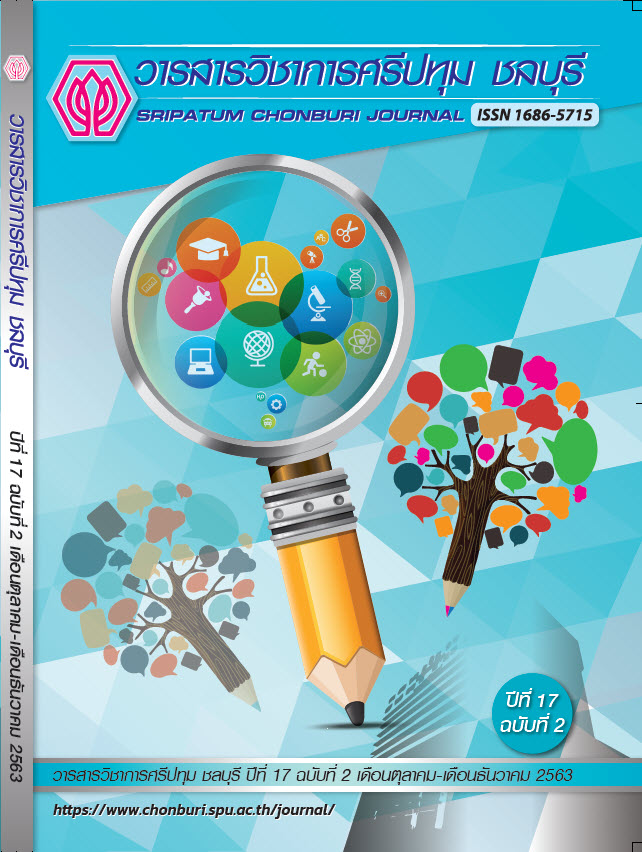FACTORS RELATING WITH MODEL FOR DEVELOPMENT ORGANIZATIONS IN DIGITAL ERA (A CASE STUDY: ORGANIZATION INDUSTRIAL IN TARGET GROUPS 10 GROUPS)
Keywords:
model for development organizations, organization industrial in target groups 10 groups.Abstract
This research was aimed to study the factors relating to the model for development organizations in the digital era (A case study: Organization industrial in target groups 10 groups). The study was a method of research using quantitative methodologies. For quantitative research, the researcher used a non-probability sampling, and the data were collected from 450 samples with level supervisor section manager department and general manager of each organization. The instrument for data collection was the Likert scale and usable questionnaires were analyzed for the descriptive information by using the means, percentages, standard deviations, Pearson’s correlation coefficients, and multiple regression analysis. The findings were as follows:
- The involved four factors (independent variables) were innovative leadership, organization change, talent management, and digital culture correlated. They were found that all factors have a relationship with a success factor (performance of the organization), in the overview by multiple correlation coefficient, is 0.666 and can be forecasted on the key success factors (performance of the organization), 0.444 in level significantly is .05 and have a standard of the estimate is +.135 and testing results that relating with for the key success (performance of the organization), is talent management, because of having the most valuable is Beta 0.430 also has a positive and strong association with a competitive advantage.
- For success factors (performance of the organization) consisting of seven factors were human resources, product, financial, marketing, relationship with customer, technological, and branding. Study results also highlight that the relationship with the customer had relating to the key success (performance of the organization) in level significantly is .05.
References
พิสิทธิ์ พิพัฒน์โภคากุล. (2563). 7 เคล็ดลับสู่องค์กรบริการที่เป็นเลิศ (ออนไลน์). เข้าถึงได้จาก: http://www.impressionconsult.com/web/index.php/articles/210-7secret.html [2563, 13 มีนาคม].
สำนักงานเศรษฐกิจอุตสาหกรรม. (2560). 10 อุตสาหกรรมเป้าหมาย กลไกขับเคลื่อนเศรษฐกิจเพื่ออนาคต (new engine of growth). กรุงเทพฯ: สำนักงานเศรษฐกิจอุตสาหกรรม.
Abbah, Maryam T. (2014). Employee motivation: The key to effective organizational management in
Nigeria. Journal of Business and Management, 16(4), pp. 1-8.
Bethke-Langenegger, P., Mahler, P., & Staffelbach, B. (2011). Effectiveness of talent management strategies. European Journal of International Management, 5(5), pp. 524-539.
Bhuiyan, Nadia. (2011). A framework for successful new product development. Journal of Industrial Engineering and Management, 4(4), pp. 746-770.
Cameron, K. S., & Quinn, R. E. (2006). Diagnosing and changing organizational culture: Based on competing values framework. San Francisco, CA: Jossey-Bass.
Charles, Adeyeye T. (2014). The impact of technological innovation on organizational performance. Industrial Engineering Letters, 4(3), pp. 97-101.
Chuang, L-M. (2005). An empirical study of the construction of measuring model for organizational innovation in Taiwanese hight-tech enterprises. The Journal of American Academy of Business, 9(2), pp. 299-304.
Delkhosh, Mohammad, & Mousavi, Hamideh. (2016). Strategic financial management review on the financial success of an organization. Mediterranean Journal of Social Sciences, 7(2), pp. 30-33.
Elijah, Ng ’ang ’a. (2016). Digital culture versus change. Journal of Engineering, 6(8), pp. 21-34.
Ghodeswar, Bhimrao, M. (2008). Building brand identity in competitive markets: A conceptual model. Journal of Product & Brand Management, 17(1), pp. 4-12.
Jantunen, Ari. (2005). Knowledge-processing capabilities and innovative performance: An empirical study. European Journal of Innovation Management, 8(3), pp. 336-349.
Kim, M. R., & Triche, Jason. (2013). Identification of driving forces in service innovations: Mobile telecommunication industry. In Proceedings of the Nineteenth Americas Conference on Information Systems. Chicago, IL: Association for Information Systems.
Lekhanya, L. M. (2015). Key internal factors affecting the small, medium and micro enterprises (SMMEs) marketing strategies in rural South Africa. Problems and Perspectives in Management, 13(2), pp. 410-417.
Magro, C., et al. (2014). Digital culture and transforming organizations. Barcelona, Spain: RocaSalvatella.
Nuryakin, Muhammadiyah. (2018). Competitive advantage and product innovation: Key success of batik SMEs marketing performance in Indonesia (Online). Available: https://www.abacademies.org/articles/competitive-advantage-and-product-innovation-key-success-of-batik-smes-marketing-performance-in-indonesia-7164.html [2020, March 13].
Parvaneh, Rastgoo, (2016). The relationship of talent management and organizational development with job motivation of employees. Acta Universitatis Agriculturae et Silviculturae Mendelianae Brunensis, 64(2), pp. 653-662.
Phillips, Deborah R., & Roper, Kathy O. (2009). A framework for talent management in real estate. Journal of Corporate Real Estate, 11(1), pp. 7-16.
Robinson, D., Perryman S., & Hayday, S. (2004). The drivers of employee engagement. Sussex, UK: Institute for Employment Studies.
Roscoe, Johh T. (1975). Fundamental research statistics for the behavioral sciences. New York, NY: Holt Rinehart and Winston.
Wigley, Stephen M. (2011). A conceptual model of diversification in apparel retailing: The case of Next PLC. The Journal of The Textile Institute, 102(11), pp. 917-934.
Downloads
Published
Issue
Section
License
บทความทุกบทความเป็นลิขสิทธิ์ของวารสารวิชาการศรีปทุม ชลบุรี



